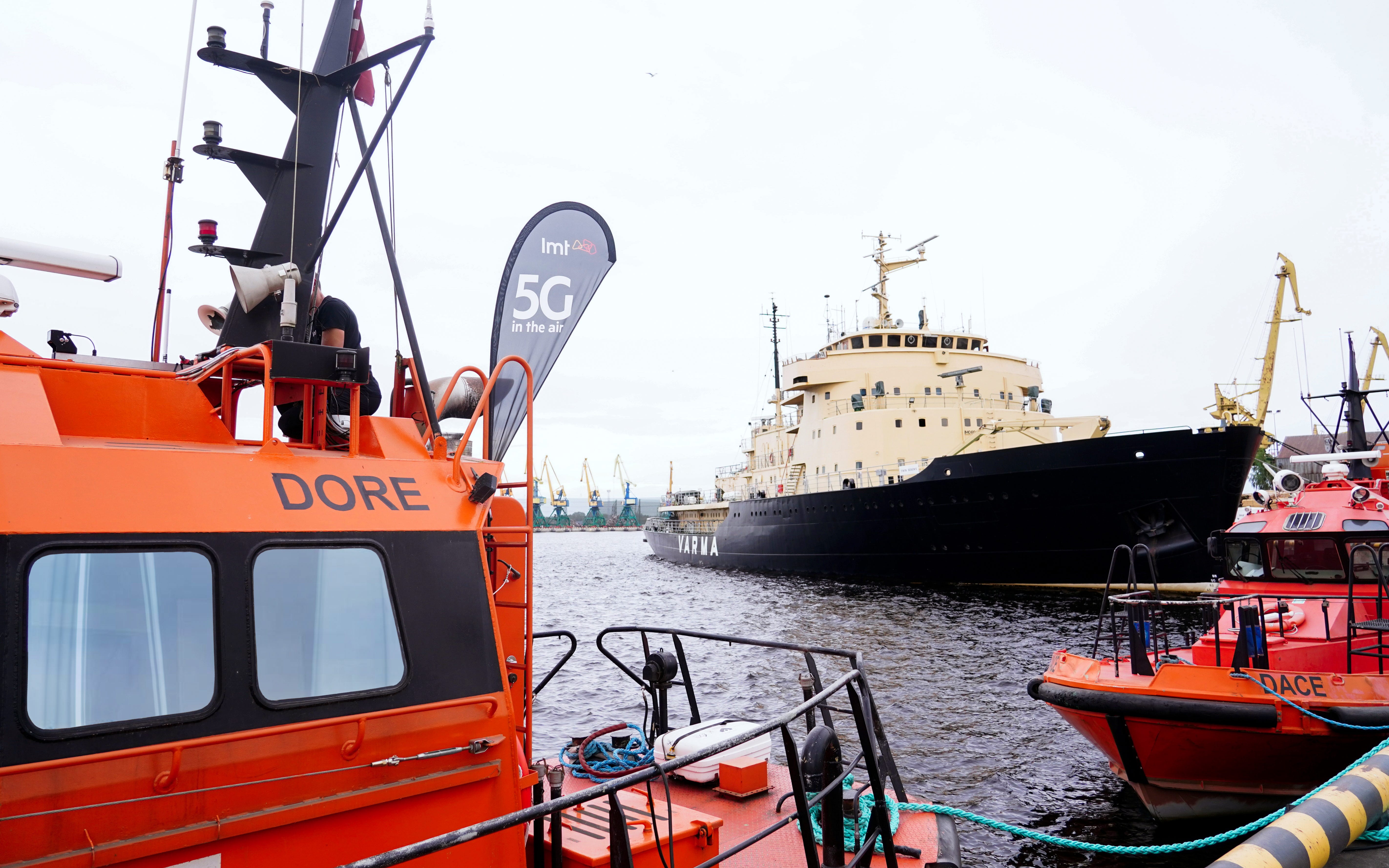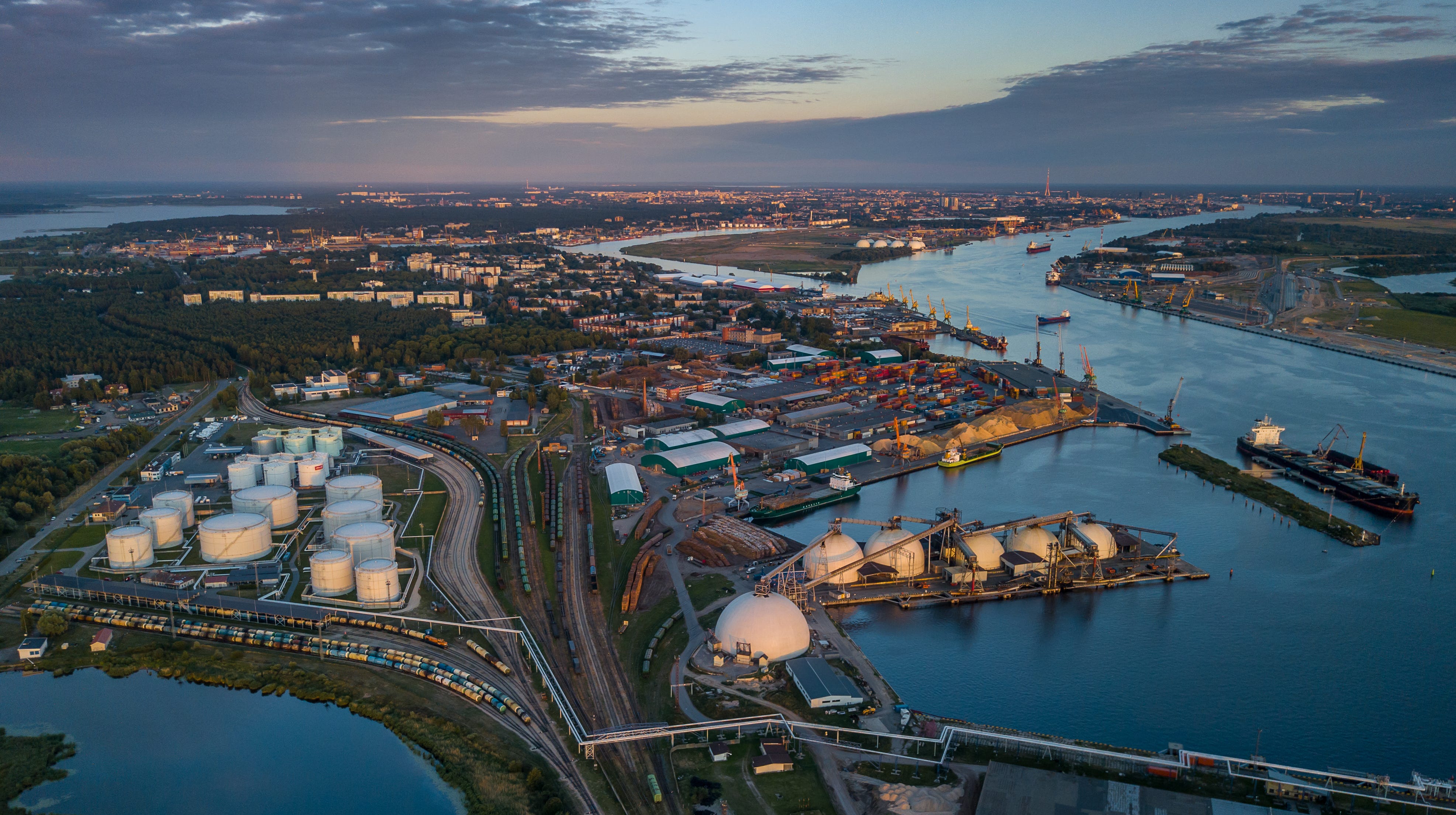
Courtesy of the Freeport of Riga
In the Middle Ages, seafarers would sail down the Daugava River to take refuge from the harsh winds and waves of the Baltic Sea. They’d anchor their ships, which carried goods like corn, hide, and flax, in a small natural harbor in the city of Riga.
Today, the harbor in the Latvian capital is still a bustling port, although cargo ships and autonomous drones have replaced the sails and oars. It was designated a freeport, or free trade zone, in 2001, which means that businesses using the port may be exempt from certain taxes and tariffs. More than 2,500 ships passed through the harbor in 2024.
Ansis Zeltins, the CEO of the Freeport of Riga Authority and the chairman of the European Sea Ports Organization, said automation is one of the biggest areas of innovation in the shipping industry. For instance, uncrewed surface vehicles, sometimes known as sea drones, can perform routine tasks like ship inspections and monitor water pollution levels.
But remote and autonomous technology requires a fast, reliable connection.
“The amount of data that needs to be processed in today’s ports is immense and continuously growing,” Zetlins said. “Modern logistics, as well as port and maritime security solutions, require the secure exchange of data between all stakeholders in real time.”
But that’s not easy when connecting ships, drones, and the port across the ocean.
“Ships are moving objects,” Zeltins said. “That means, technologically, there’s a challenge with the signal.”
The port used to rely on WiFi and 4G to connect ships and drones to the mainland, but in 2020, it teamed up with LMT, a Latvian telecoms company, to roll out 5G connections across the port.

Courtesy of the Freeport of Riga
More devices, faster speeds
5G is a wireless technology that uses radio waves to transmit data.
“For the majority of people like you and me, 5G is not that big of an upgrade from 4G or WiFi,” Chris Karaplis, the CEO of Simply Embedded, a technology consulting firm, told Business Insider. “While speeds can be slightly faster, the biggest differentiator is its ability to support more devices, so your connection won’t slow down when more people are on the network.”
5G can support as many as 2.6 million devices per square mile.
“For industrial applications in sectors such as manufacturing, logistics, and smart cities, 5G can be a game changer,” Karaplis said. “Being able to send large packets of data more reliably and faster, ultimately improving efficiencies, is a huge benefit for infrastructure or logistics-critical businesses.”
At the start of the 5G rollout, LMT and Freeport of Riga built a private 5G network within the Baltic Container Terminal on the mainland. They replaced 22 WiFi access points with just one central control system and two outdoor antennas.
Under the new 5G system, Vilciņš said data transmission speeds became more than 10 times faster. This resulted in the use of other technology in port operations, such as replacing handheld radio communications with push-to-talk, a solution that allows the transmission of images and videos as well as sound.
“There were immediate improvements in business processes,” Kārlis Vilciņš, the head of system integration business at LMT, told BI in an email. Vilciņš said before the switch, container reach stackers, or vehicles used to transport containers within the port, idled and waited for a stable connection to handle containers, which often caused delays.

Courtesy of the Freeport of Riga
‘Multi-hop’ connections
The real challenge was connecting the ships in transit. They used a “multi-hop” method, where ships serve as floating telecom base stations. One vessel connects to the mainland’s 5G antenna, then passes that connection to the next ship, and so on.
LVR Flote, a port services provider based in Riga, first successfully tested the method in November 2023 using LĪVA, the first 5G-equipped ship on the Baltic Sea. This past July, the company carried out a more complex test, connecting two ships with an airborne drone that transmitted real-time seabed surveys and video footage back to the port. These hydrographic measurements are critical for safe navigation and port operations.
“5G provides an option for real-time controls,” Zeltins said. “It’s much safer and more responsive.”
Ships using the multi-hop technique can connect up to 18 miles apart. Up to five ships can be linked up in this way, extending the total network range at sea to more than 100 miles.
“This is a major improvement because such technology has not been deployed at sea before,” Arturs Lindenbergs, the head of the innovation development division at LMT, said in an email.
Looking ahead, Zeltins wants to harness the faster connection to bring new technology to the Freeport of Riga. For instance, the port is testing a Remote Operations Center platform for autonomous maritime systems.
“Our collaborative efforts have the potential to make the port of Riga a unique test bed for next-generation maritime technologies, increase high-value-added activity at the port, and attract high-value investments and new revenue streams,” he said.
The post A busy port’s new 5G network can help cargo ships 100 miles away stay connected to the mainland appeared first on Business Insider.




